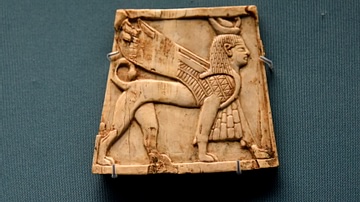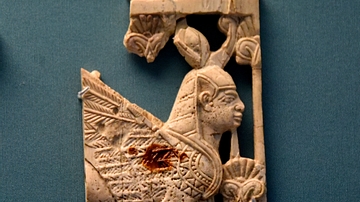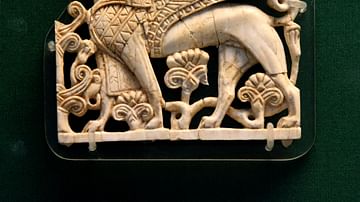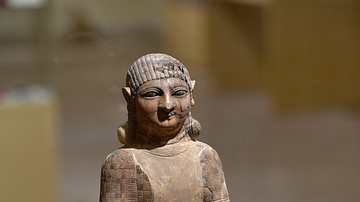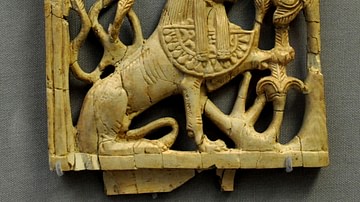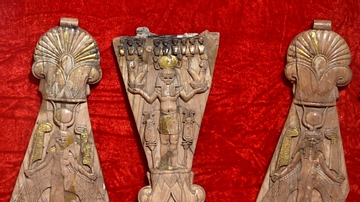Illustration
This ivory plaque is virtually complete but burnt (partly black and partly grey). It depicts the bearded head and forequarters of a sphinx, advancing left with head turned outwards. This is one of the rare examples of the combination of Syrian, Phoenician and Assyrian styles. Excavated by the British School of Archaeology in Iraq. From Room T10 at Fort Shalmaneser, Nimrud, Iraq. Neo-Assyrian period, 2nd half of the 8th century BCE. On display at the Iraq Museum in Baghdad, Republic of Iraq.
About the Author
References
World History Encyclopedia is an Amazon Associate and earns a commission on qualifying book purchases.Cite This Work
APA Style
Amin, O. S. M. (2019, June 08). Ivory Sphinx from Nimrud. World History Encyclopedia. Retrieved from https://www.worldhistory.org/image/10894/ivory-sphinx-from-nimrud/
Chicago Style
Amin, Osama Shukir Muhammed. "Ivory Sphinx from Nimrud." World History Encyclopedia. Last modified June 08, 2019. https://www.worldhistory.org/image/10894/ivory-sphinx-from-nimrud/.
MLA Style
Amin, Osama Shukir Muhammed. "Ivory Sphinx from Nimrud." World History Encyclopedia. World History Encyclopedia, 08 Jun 2019, https://www.worldhistory.org/image/10894/ivory-sphinx-from-nimrud/. Web. 24 Apr 2025.



